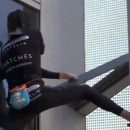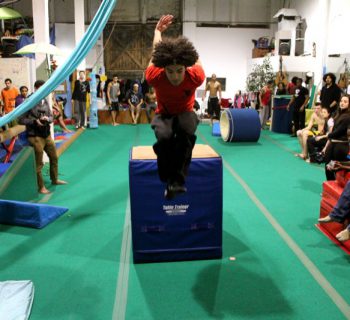In addition to monster numbers of opinions, subscribers, and supporters on social media outlets such as Facebook and YouTube, one of the best ways to evaluate parkour's development is through search volume numbers. Fortunately, Google has a fairly unknown service called Trends. Google Trends can generate sturdy graphic depictions of parkour's popularity through the unrivaled traffic of the search engine. For many reasons, search volume is an excellent way to assess growth or decrease over time. Keep reading through Google Trends for some interesting stuff I've learned while running all types of parkour information.
#1) The Rise of Parkour
Parkour rose tremendously in the early 2000s and peaked in 2006, as you can see in this first graph. Search volume has since varied from month to month but has remained about the same over a previous couple of years with perhaps some tiny, constant development. This implies that for 8 years now parkour has stood constant and powerful. This chart can also tell us some of the most monumental times in the latest history of parkour. The graph's largest spikes correlate with Jump Britain's launch (January 2005), a BBC news segment (June 2006), and MTV's Ultimate Parkour Challenge (May 2010).
But it's still the greatest to come. Parkour almost struck a fresh high just 6 months ago, even without mega-television shows and documentaries. I forecast that a fresh apex of parkour search volume will result in the next 12 months.
#2) Parkour vs. Freerunning
Freerunning was invented as a synonym for parkour in Jump London. Freerunning, however, gained its own identity rapidly. There was no need for the English synonym for parkour because the term parkour was captured all over the globe. As shown in the graph below, together "parkour" and "parkour" are much more sought after than "free-running" and "freerunning." I must confess that it is a pain in the ass to constantly say or think both words.
Many veterans of the movement now regard parkour, freerunning, and other similar styles as being essentially the same. Seeing how parkour is tremendously favored by the Internet, I would love to drop freerunning and simply use parkour for several types of motion as an umbrella title. The only constant is changing.
#3) Parkour Surpasses Other Action/Extreme Sports
A powerful indication that parkour is more than a fad is that in Google's search volume it has exceeded some of the largest action / extreme sports. By 2006, Google had made parkour more popular than mountain biking and climbing rock. Parkour exceeded skateboarding in May 2010. You're reading that right, yeah. On the internet, parkour has overcome an iconic sport and sector worth more than $5 billion a year, with only 11 + million respondents in the United States.






